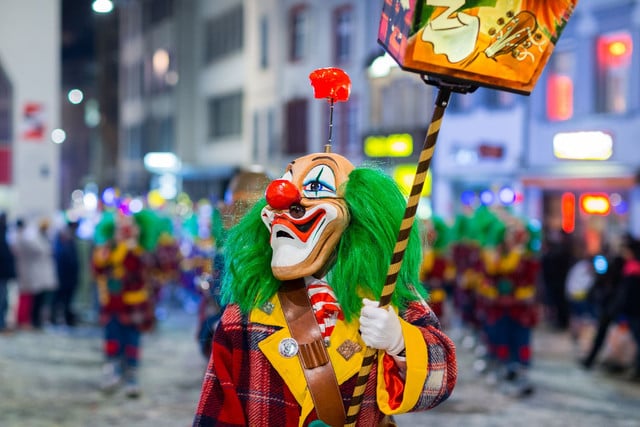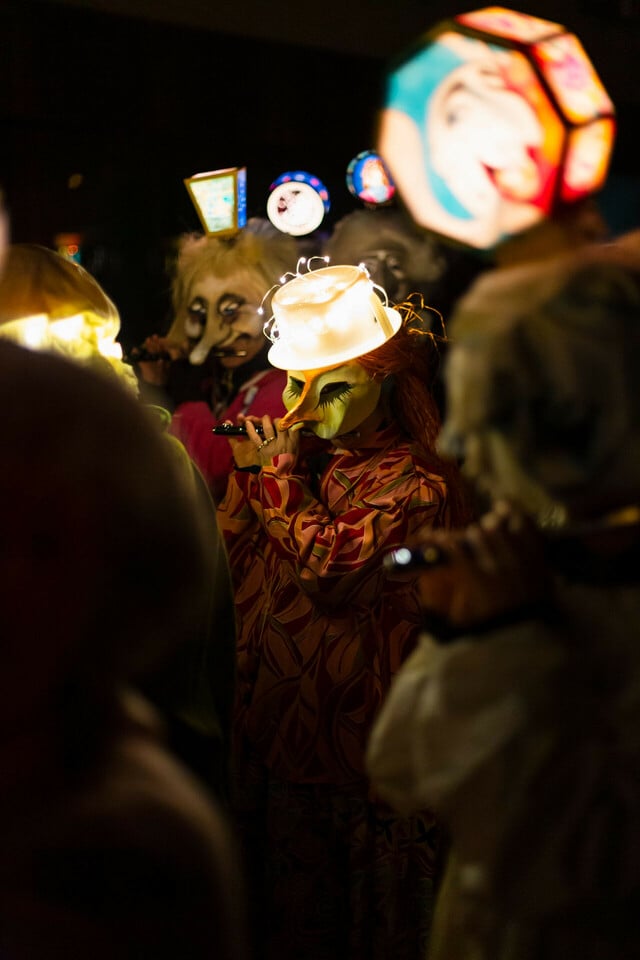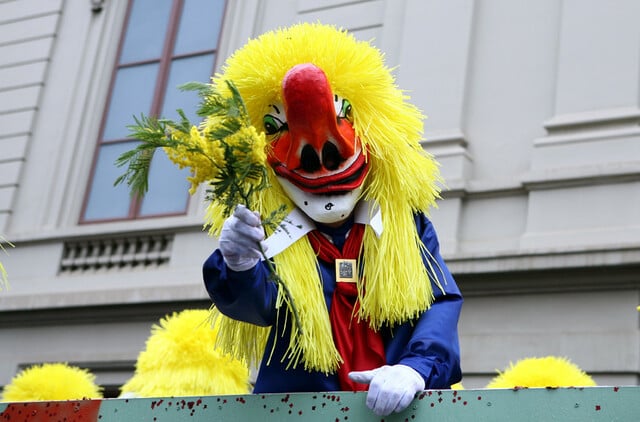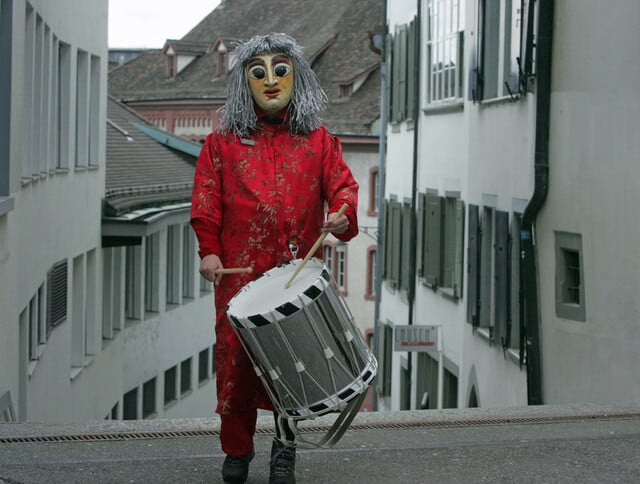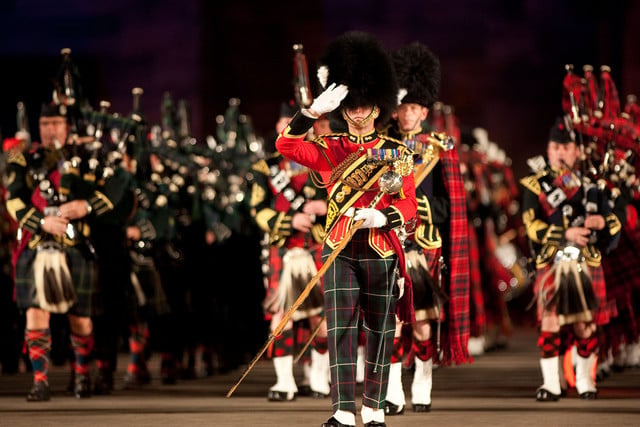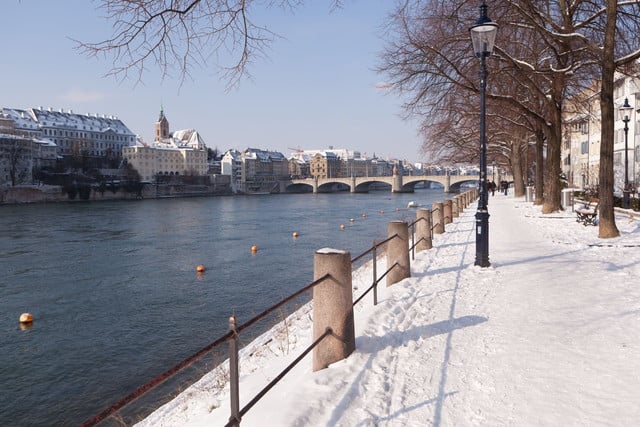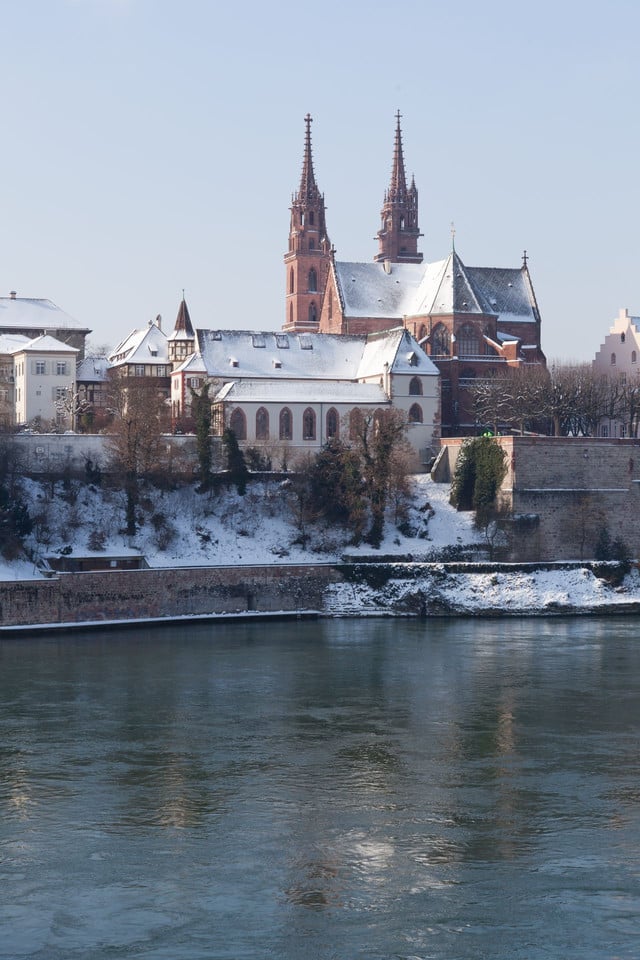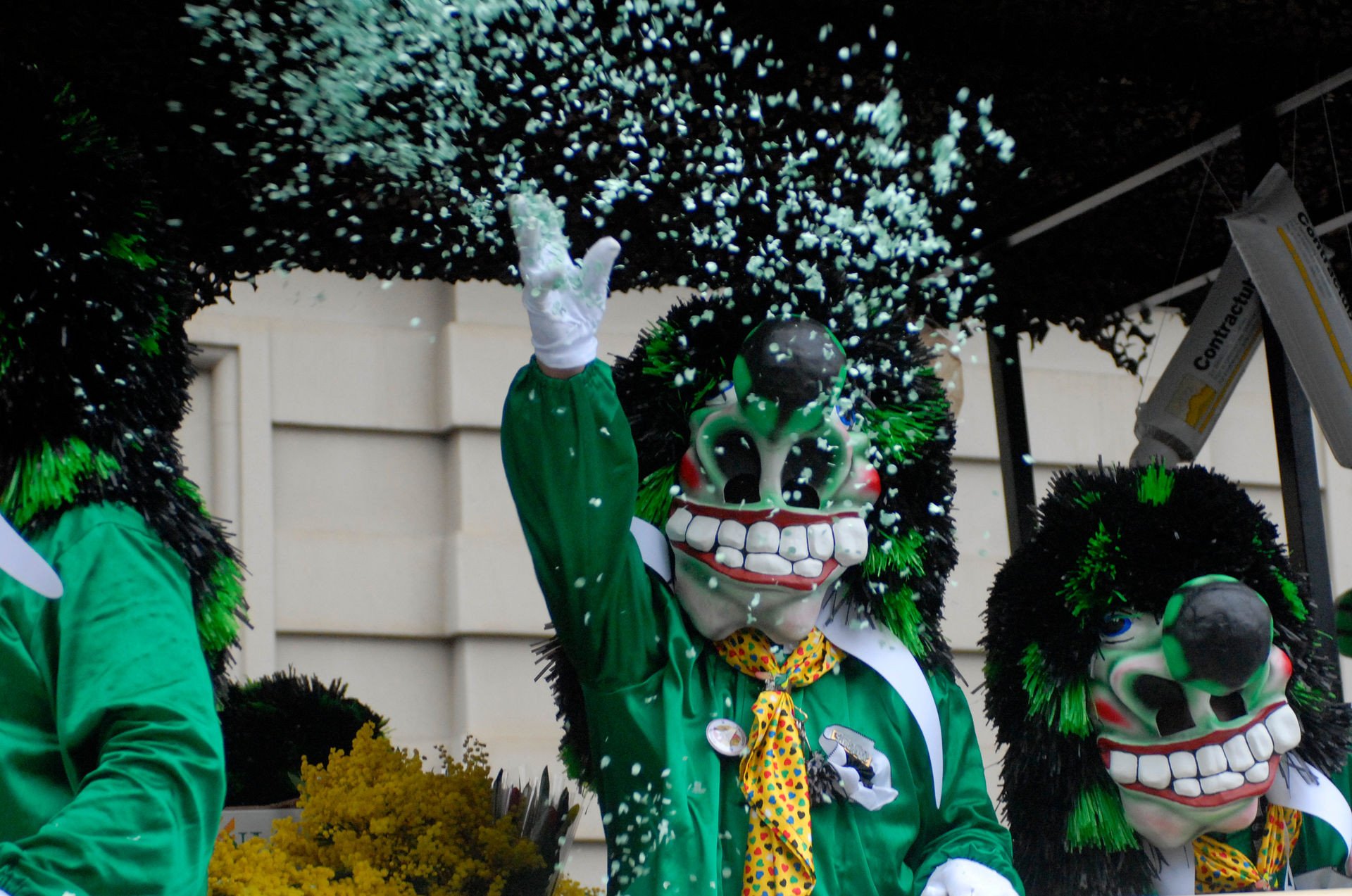
Playful
This is Basel.
Carnival in Basel
The Carnival in Basel is part of the city’s identity – culturally speaking, it is at the heart of its creative energies and represents three days when the city goes wild. The largest carnival of Switzerland is so unique and of such exceptional quality that it appears on the UNESCO Intangible Cultural Heritage List.
Basel turned upside-down
Our “Dame Fasnacht” – as the people of Basel lovingly call their festival – will transport you into the world of a different type of carnival. The event combines unique musical instruments, creativity and ideas, and first-rate artistic performances. This is where socio-political topics, stories and current events are communicated in a typical Basel manner: proudly, with acerbic wit and biting humour.
It starts on the Monday after Ash Wednesday at 4.00 am sharp – in total darkness. The popular “Morgestraich” then turns the city centre into a sea of illuminated, hand-painted lanterns, where thousands of costumed pipers and drummers accompany their lanterns and thus their theme with music through the streets – until the “Ändstraich” on Thursday morning, again at 4.00 am sharp. And you absolutely have to experience everything in between.
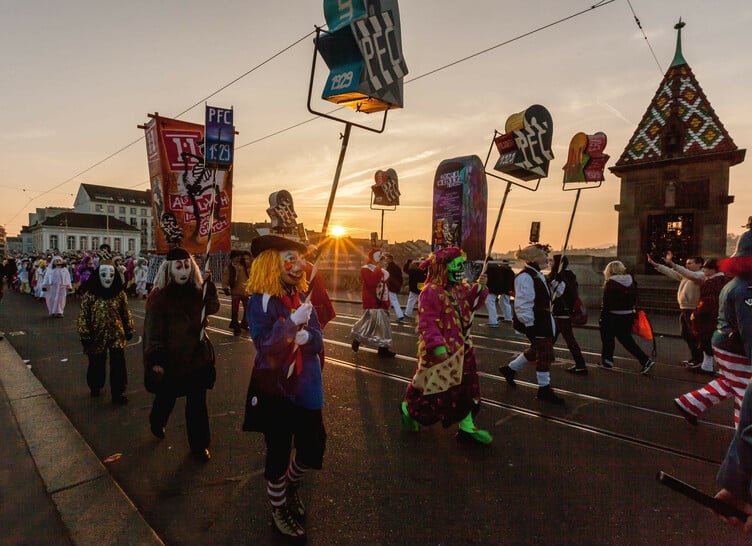
Dates and programme of the Carnival in Basel
But what makes the Carnival in Basel particularly special is its blend of anarchical chaos and well organized large-scale event. The following is an overview of what visitors should experience.
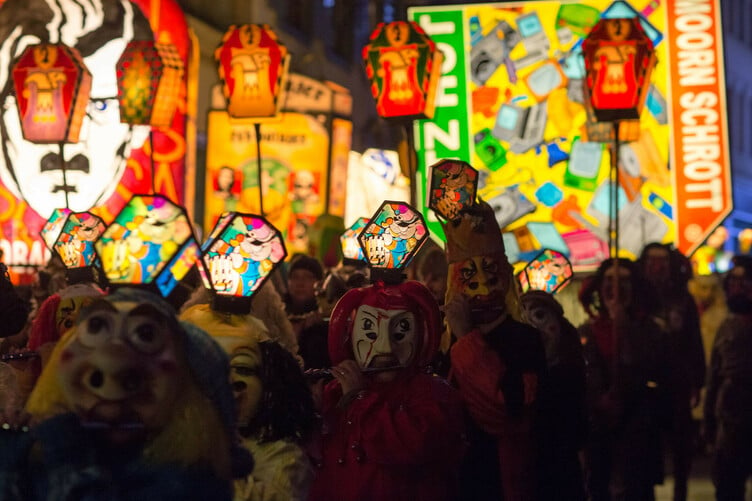
Morgenstreich
19 February 2024, 4.00 am
The Carnival in Basel starts at 4.00 am on the Monday after Ash Wednesday. Upon the fourth chime of St Martin’s church, all the lights go off in the inner city. At the drum majors’ command of “Morgestraich: vorwärts, marsch!”, the alleys and the streets spring to life with the sound of hundreds of piccolos and drums. All the cliques* open with the Morgestraich, a very traditional and archaic marching tune, which is only played on this occasion. The only light in the blacked-out streets comes from the myriad of lanterns that accompany the pipers and drummers, alighting the faces of thousands of spectators from all over the world who want to experience this magical moment.
The Morgenstreich is busiest on Barfüsserplatz, the Marktplatz, Rümelinsplatz, Falknerstrasse and Freie Strasse. If you’d rather avoid the main hurly-burly, you can also enjoy the Morgenstreich on Leonhardskirchplatz, Martinskirchplatz, Nadelberg or Münsterplatz, for example.
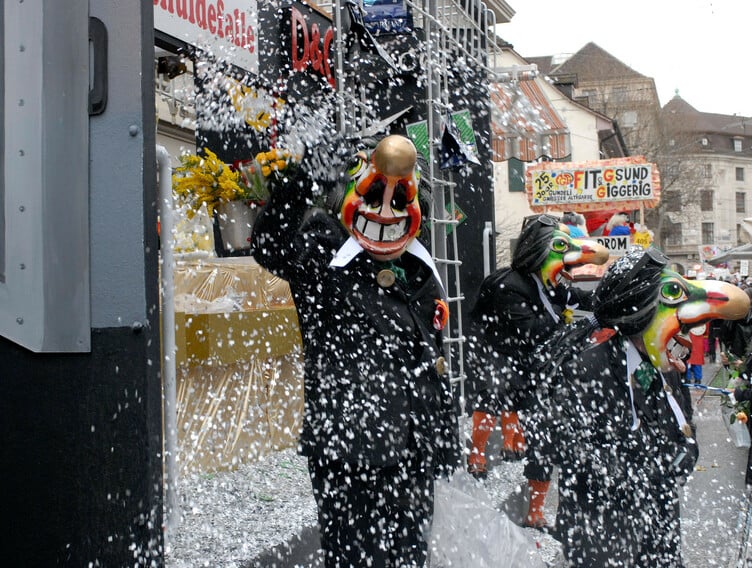
Cortège
19 and 21 February 2024, 1.30–6.00 pm
The large street parade called cortège takes place on Monday and Wednesday afternoon. Around 10,000 costumed Carnival revellers in formations of various sizes present their sujets (themes). Unlike the Morgestraich, the cortège is an event for all Fasnacht formations:
- Floats
- “Gugge” (brass music that plays pieces of music from popular hits, pop and jazz with percussion and rhythm instruments as well as brass instruments)
- “Ainzelmasgge” (individual maskers)
- Large and small cliques (all groups participating in the Carnival)
- Groups
- Horse-drawn carriages (chaises)
In some cases, a formation’s sujet is already recognizable from a distance – namely on the large lantern that precedes each traditional clique. The sujet is also represented and reflected in the head-masks (Larve), costumes, and props (Requisiten). Behind the lantern and the so-called “Vortrab” (vanguard) come the pipers, the drum major and the drummers. Some of the large floats and props (Requisiten) that feature in the cortège can be admired at the Kaserne where they are on display throughout the day on Tuesday.
The parade follows a set route through the city centre:
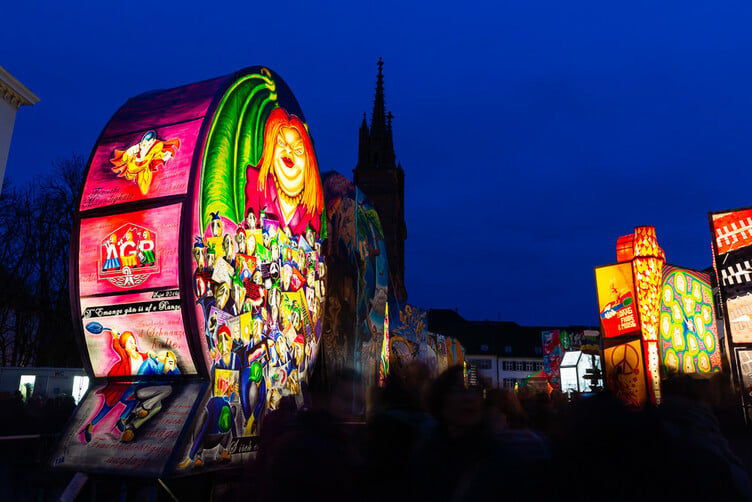
Lantern exhibition
19 to 21 February 2024
After the parade on Monday afternoon, the cliques display their elaborately designed lanterns on the Münsterplatz. Featuring the visualized sujets, the lanterns reveal their true magic after dark when they are lit for the first time after the Morgestraich. They come in many forms and styles. Some bear the unmistakable signature of regular artists, others are painted by laymen and -women. Today, new techniques and innovative materials are being employed increasingly. What once began with caricatures of well-known Basel politicians and personalities has over the last decades developed into a true art historical digest.
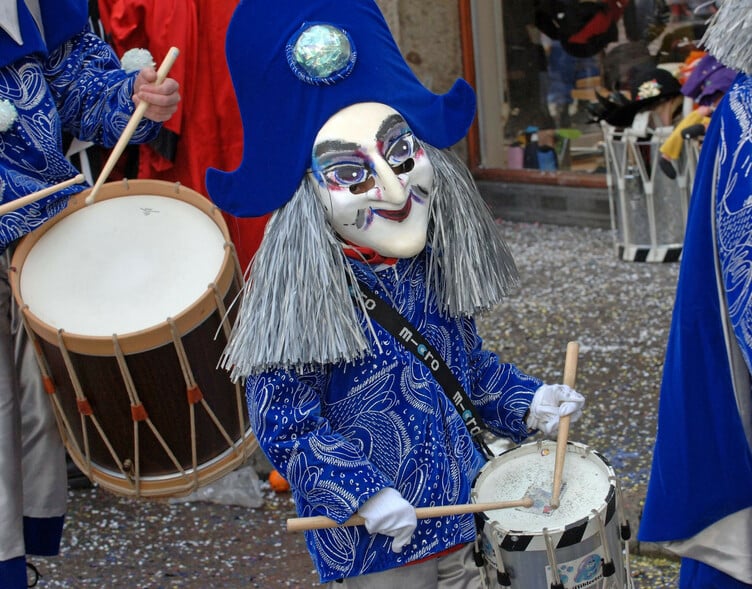
Kinderfasnacht
20 February 2024
On Tuesday afternoon, the city centre is again caught up in the hustle and bustle of Fasnacht. In small groups, “Binggis” (children) accompanied by their parents, grandparents and other adults practise these traditions. Dressed in imaginative costumes and equipped with drums, musical instruments and small handcarts, they roam the streets, distribute “Zeedel” (witty leaflets they wrote themselves) and “Dääfeli” (sweets), and the spectators with “Räppli” (confetti). In turn, adults, too, make use of the day to celebrate Carnival unconstrained by the strict schedule of the cortège, in loose formations and wearing their favourite personal mask and costume.
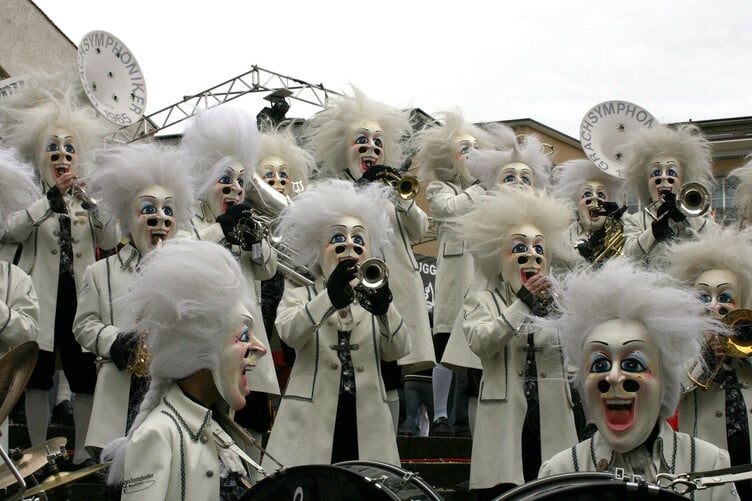
Guggenkonzert
20 February 2024
On Tuesday evening, the town is in the hands of the Guggenmusik bands. A part of the roughly 60 brass bands equipped with ear-shattering trumpets, trombones, tubas, drums, kettledrums, and cymbals convene at Exhibition Square around 6.30 pm. From there they parade through Clarastrasse towards the city centre and the three large squares (Barfüsserplatz, Marktplatz, and Claraplatz) where they perform on specially erected stages. The popular and eagerly awaited Gugge concerts are staged between 7.30 and 11.00 pm but most of the bands also play before and after the main event in restaurants and on squares across town. On this evening, the piper and drummers give way to the Guggenmusik bands and retreat to the small alleys away from the main streets and squares.
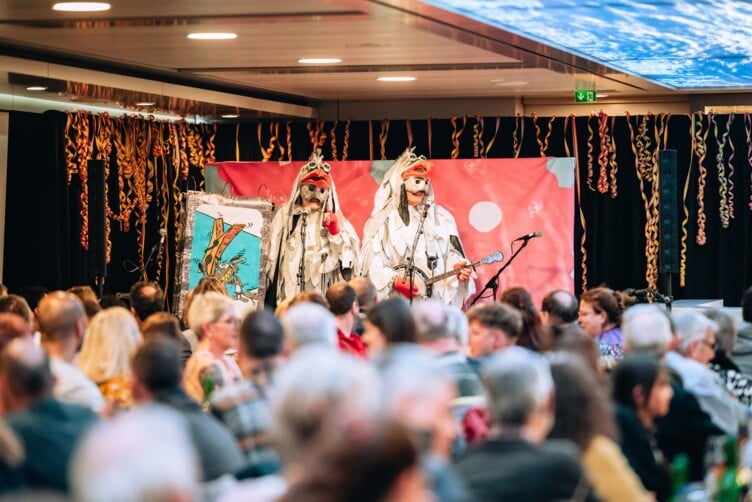
Schnitzelbanks
19 to 21 February 2024
One of the most salient features of the Basel Fasnacht are the so-called Schnitzelbanks. The satirical rhyming songs are regarded as the epitome of carnival humour. The Schnitzelbank singers, who usually also write the songs, comment on political and social events that occurred over the last year in elegantly rhymed and witty verses, usually spiced up with a sound portion of satire and a pinch of humorous malice. Schnitzelbank singers perform in restaurants and theatres on Monday and Wednesday evening, on Tuesday evening also in clique cellars (where the cliques practise) and private houses. Just as important as the songs are the illustrations that go with them, the so-called “Helgen”; each song comes with its own picture which is held up to the audience. A good illustration provides hints to the song’s theme, but without disclosing the punchline.
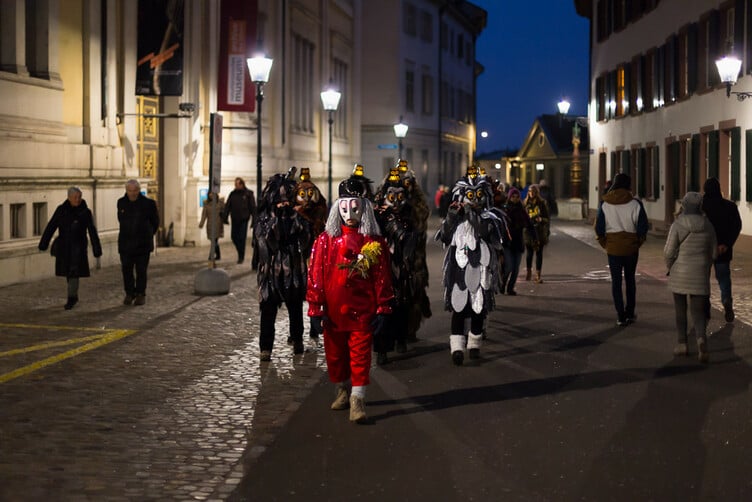
Endstreich
22 February 2024
Before the loveliest three days of the year come to an end with the “Endstreich” –the close of the Carnival – Fasnacht activity is ratcheted up a notch on Wednesday evening. The active participants go all out after midnight and enjoy this additional Carnival highlight to the fullest. Then, just before 4 am on Thursday morning, the cliques and Gugge groups proceed to one of their regular meeting places and play a final march or other piece of music to mark the end of the Carnival. They then take their leave and begin looking forward to the next Fasnacht.
Sunday marches
The cliques get to bang their drums, play their pipes and make an almighty noise again on the three Sundays following the Carnival. The Sunday marches – a Carnival tradition – give revellers a chance to parade through the city centre with their drums and pipes, but without their costumes and masks, filling the streets with the sounds of the Carnival once more.
The Sunday marches take place on 25 February, 3 March and 10 March 2024.
The history of the Carnival in Basel
The Carnival in Basel is Switzerland’s largest “carnival” and the main Protestant one in the world. However, its history is lost in the mists of time as all the relevant documents were lost in the devastating earthquake of 1356. The oldest document about the Carnival in Basel dates back to 1376.
Like with most carnival customs, the roots of the Basel Fasnacht trace back to ancient Celtic and Germanic origins and practices relating to ancestor worship, fertility rites, and the expulsion of winter. Later it was also influenced by such events as medieval jousts, military musters organized by the city’s guilds, and religious festivals before Lent. When, during the age of Reformation, merrymaking and feasting were increasingly restricted, even banned at times, the Basel Fasnacht gradually developed into a display of resistance against the city’s authorities. In the 19th century, the nature of Fasnacht began to change. The first cliques were formed, Schnitzelbank singers made their appearance for the first time, and piping and drumming gradually became the hallmark of Fasnacht. The parades became more political and gradually adopted their typical satirical bent. Fasnacht as we know it today took on its shape above all in the course of the latter half of the 20th century. In the years after the Second World War, many new cliques were established, the quality of piping and drumming rose to new levels, while the costumes and head-masks (Larve) took on their typical Basel touch. New traditions and rituals sprang up which are still celebrated today as if they had existed already for centuries.
Guilds
Basel’s guilds had a considerable influence on the development of Carnival, the loveliest three days. Conscription of guild members required to do military duty in the 16th century was closely connected to Carnival. Military elements were incorporated which still characterize Carnival in Basel to this day: the measured marching pace to the sound of drums and piccolos.
Blaggedde (Fasnacht badge)
The “Blaggedde” is a brooch-like badge that features a new design every year, encapsulating the current motto of the Carnival in Basel. It was introduced in 1911. The Fasnacht Committee (Comité) was permitted to sell them in order to finance part of the Fasnacht costs. The income still serves to subsidize the cliques.
The badge is available at the Tourist Information office from mid-January 2024 onwards.
First Morgenstreich
The first officially permitted Morgenstreich was held in 1835. Back then, the Fasnacht participants took to the alleys with burning torches. The first pole-mounted lanterns appeared in 1845 when a ban on carrying open-flame torches was issued. The first large procession lantern was documented in 1860.
Committee
The Fasnacht Committee, founded in 1910, consists of ten to fifteen honorary members and is responsible for the organization of the loveliest three days of the year. It provides services to the groups involved in Fasnacht and mediates between the interests of the Fasnacht, the general public, and the authorities.
UNESCO Cultural Heritage
At its meeting on 7 December 2017 on Jeju Island (South Korea), the Intergovernmental Committee decided to include Basel’s Carnival in the Representative List of the Intangible Cultural Heritage of Humanity. The list comprises cultural forms of artistic expression such as dance, theatre and music, as well as oral heritage and traditions, and handicrafts. After the Winegrowers’ Festival in Vevey, the Basel Carnival is the second element of Swiss cultural heritage to be included in the list.
With its decision, UNESCO pays tribute to the rich tradition and singularity of this three-day event. What makes it so impressive, according to UNESCO, is its unique blend of music, written and oral forms of expression, and artisanal outputs.
And it’s not only local people who keep the tradition of the Carnival alive: every year, thousands of tourists come especially to Basel to be part of the festivities. Whether local or tourist, everyone is bowled over by the uniqueness, quality and sheer diversity of the event.
Do you want to learn more about the history of Basel?
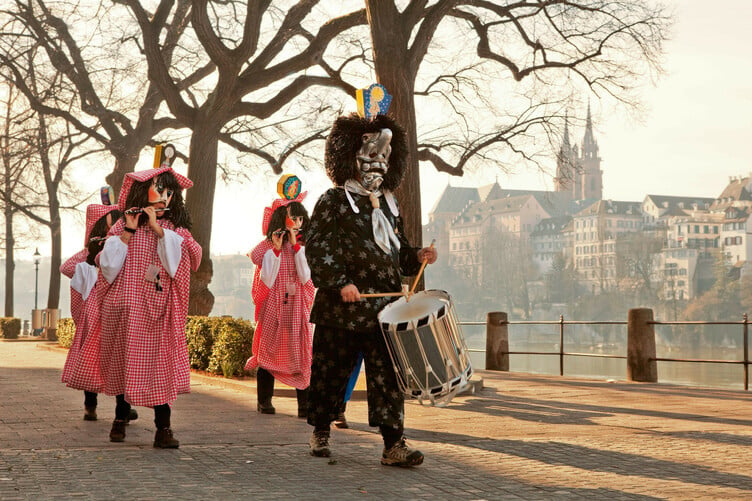
Traditional Carnival costumes
A large number of characters are on the move during Carnival (Fasnacht). Some of the “Goschdym” (costumes) are based on Italy’s Commedia dell’Arte, while others are inspired by local events.
At the Basel Fasnacht, active participants hide their true identity under a “Masgge” (full-body mask) according to the unwritten laws of Fasnacht. The head-mask is referred to as “Larve”; up to this day, most of them are still elaborately handcrafted.
Many groups still design and create their own costumes and head-masks. One distinguishes between three types of costumes:
- Parade costumes (which lend expression to a formation’s current sujet)
- Classical costumes
- Individual fantasy costumes
Some of the classical costumes have a long tradition:
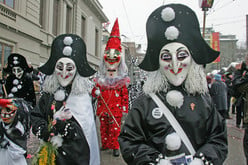
Harlequin
The carnival figure Harlequin (originally known as Arlecchino) is a servant character originating from Italy’s Commedia dell’arte. Harlequin wears a distinctive chequered costume and a cape, ruff, pompoms and harem pants.
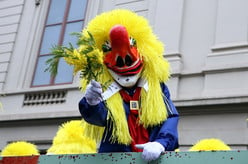
Waggis
A caricature of an Alsatian peasant from the 19th century was the starting point of today’s “Waggis”. The people of Alsace used this name to denote a vagabond or day labourer. Even today, the character’s boisterous behaviour is just as much a part of this figure as his typical costume. However, the costume has undergone major changes over the years. The nose has grown steadily larger, and the clothes have taken on different colours.
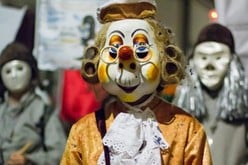
Dummpeter
The Dummpeter Fasnacht figure almost died out in the pre-war years. However, he is now often seen again at Fasnacht. He has a childlike, dreamy expression and, because his mask features chubby cheeks, he lends himself to piccolo groups. His origins are not completely clear. According to one theory, his name was originally “Drummpeter” (trumpeter) but was modified to Dummpeter (literally “stupid Peter”) over the years.

Alti Dante
The figure of the “Alti Dante” (old dame) arose towards the end of the 19th century and was very popular in the early part of the 20th century. The Alti Dante is a caricature of a well-to-do older lady from Basel’s upper class. Her clothes and accessories are often reminiscent of the Biedermeier period.

Ueli
The Ueli harks back to the Mediaeval court jester, on whose outfit his costume is based. The top part and trousers are of two different colours, and he wears fabric horns on his head. Another typical feature are the many bells attached to the costume. It’s therefore difficult not to hear a Carnival participant disguised as an Ueli.

Blätzlibajass
“Blätzlibajass” is a combination of the words “Blätzli” and “Bajass”. Bajass is the Basel dialect word for bajazzo, a clown in Italian Commedia dell’Arte. The term “Blätzli” refers to the hundreds or even thousands of pieces of fabric that adorn the costume.
Carnival participants
Over 300 cliques, wagon cliques, carriages and Gugge music bands register for the official procession each year. In addition, more than 200 lanterns are painted by hand for Carnival. And in Basel’s streets and alleys, over 100 Schnitzelbank performers plus countless individual figures and groups, who don’t participate in the procession, are on the move.
There are different ways of playing an active role in the Carnival.

Cliques
The first cliques were created around the middle of the 19th century from a number of Basel associations and societies. The first societies whose sole purpose was to participate in Carnival were set up around 1870. These often hailed from specific districts or suburbs, as reflected in some clique names such as Stainlemer, Spale or Glaibasler. During the loveliest three days, they march through the city centre with drums and piccolos and enhance the Carnival activity with both traditional marches and more modern music.

Gugge music
Brass instruments already began to be heard as of the mid-19th century, and in the early part of the 20th century accordions and mandolin groups also took part in Carnival. Gugge music subsequently developed from the brass contingent. Around 70 groups of this type with over 2,000 active participants take part in the procession and give concerts, mainly on Tuesday evening. These are held in large squares but also in overcrowded pubs in the city centre.
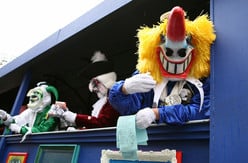
Wagon cliques
These cliques are a prominent feature of the two big "Cortège" parades. They present and act out themes on their elaborate and artistic vehicles. The Waggis on the floats distribute flowers and oranges along with other small treats – mostly food and drink – always coupled with a generous shower of confetti.
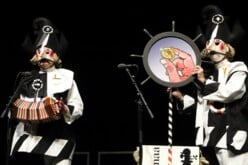
Schnitzelbank performers
Schnitzelbank performers focus on topical events. Each verse deals with a different theme: events from the fields of politics, sport, economics and society that made the headlines during the past year. The verses are cleverly rhymed, humorous, and cutting or satirical. They hold the listeners’ attention right through to the laughter triggered by the punchline. The verse is usually accompanied by a musical instrument. The melodies are sometimes those of balladeers that have been handed down over generations, alternated with well-known folk tunes and modified versions of popular hits. The Schnitzelbank performers can be found mainly in pubs, restaurants and clique cellars.
Good to know.
-
The Carnival begins on the Monday after Ash Wednesday. Depending on Easter Sunday, this is in February or March of each year.
In 2020 and 2021, the Carnival in Basel had to be cancelled because of the COVID-19 pandemic.
-
The Carnival in Basel lasts exactly 72 hours, that is, three days.
-
The traditional Morgenstreich opens the famous Carnival in Basel at 4.00 am. On Monday and Wednesday evening, the Schnitzelbank performers appear in many restaurants, performing explosive and amusing topics that have moved the city and its citizens in the past year. Tuesday is always dedicated to the Kids’ Carnival, and in the evening there is “Guggenmusik”. After the major cortèges on Monday and Wednesday afternoons, that is, a parade through the city, the Carnival in Basel ends 72 hours later, again at 4.00 am.
-
Around Spalenberg (there are lots of clique cellars on Nadelberg, Imbergässlein and Pfeffergässlein in particular):
- Basilisgge
- Basler Dybli
- Breo Beiz
- Die Aagfrässene
- Dupf-Club
- Basler Mittwoch-Gesellschaft
- Opti-Mischte
- Pfluderi
- Rumpelstube
- Schnäderänte-Clique
- Spale Clique Alti Garde
- Spale Clique Stamm
In other alleyways in Basel’s Old Town:
- Gämbsbärg-Käller
- Heubergkäller
- Knochestampfer Waggis
- Primidoofe Clique
- Rauracherkeller
- Verschnuuffer
- Lälli Clique
Around Barfüsserplatz and on Steinenvorstadt:
- Sans Gêne
- Breo-Clique
- Fuege-Fäger
- Barbara-Club 1902
- Alti Richtig
- Glunggi
- Grottegyggser
- Privé-Waggis
- Die Versoffene Deecht
- Stainlemer
There are also a few clique cellars in Kleinbasel:
- Naarebaschi
- Guggenmusig Horburgschlurbi
- Gugge-Mysli
- Ueli Schränzer
- Ohregribler
- Die Antygge
#thisisbasel
Share your ❤️ of Basel with us. Tag your photos using #thisisbasel to get featured on our Instagram feed @baselswitzerland and at basel.com


